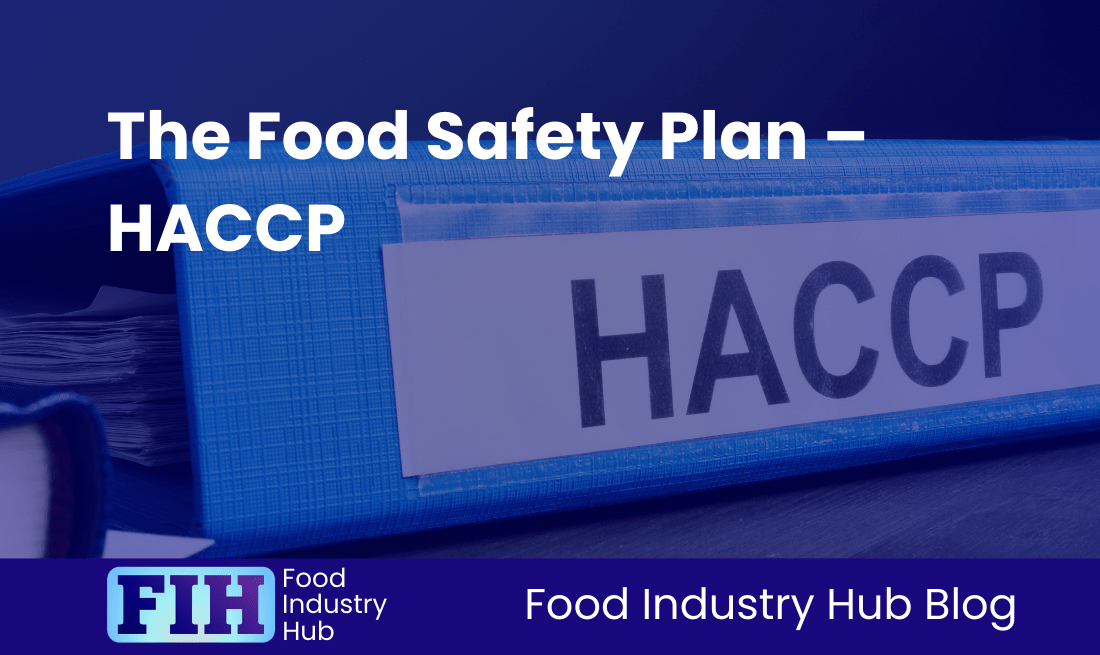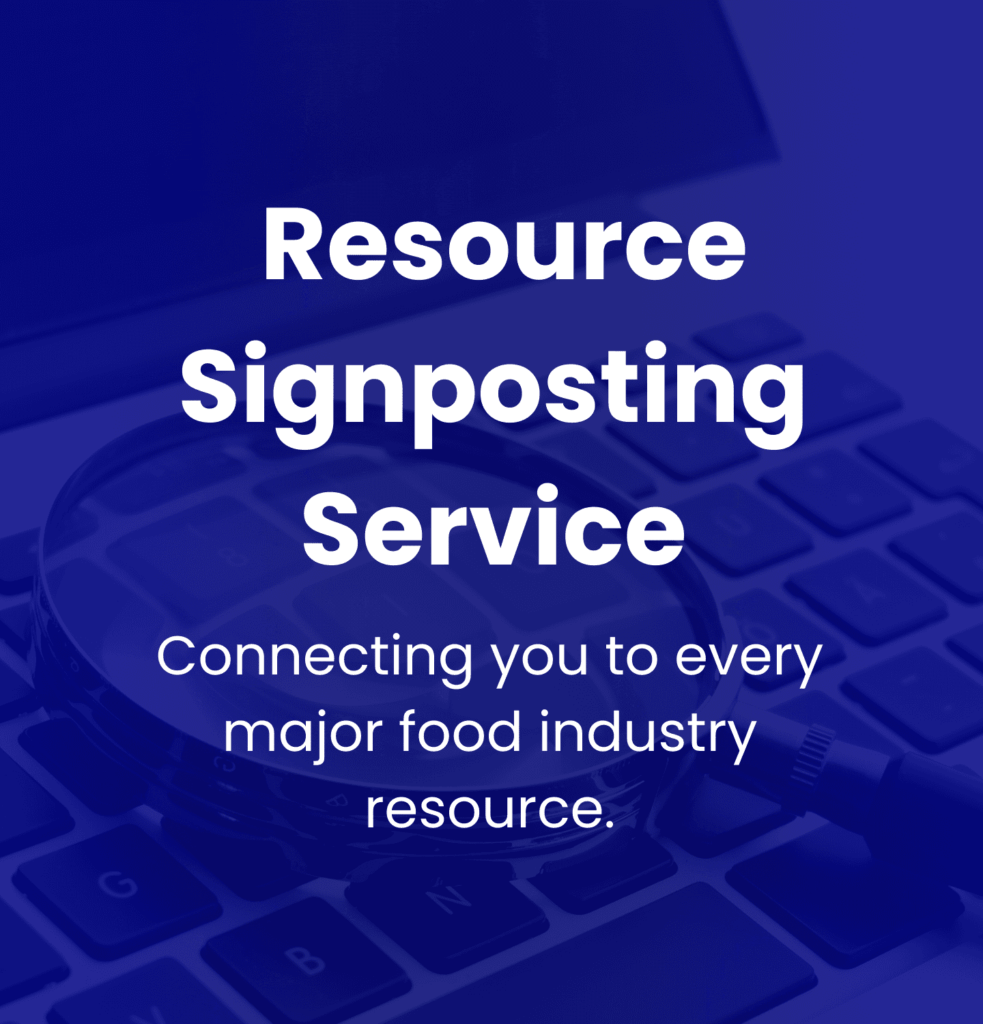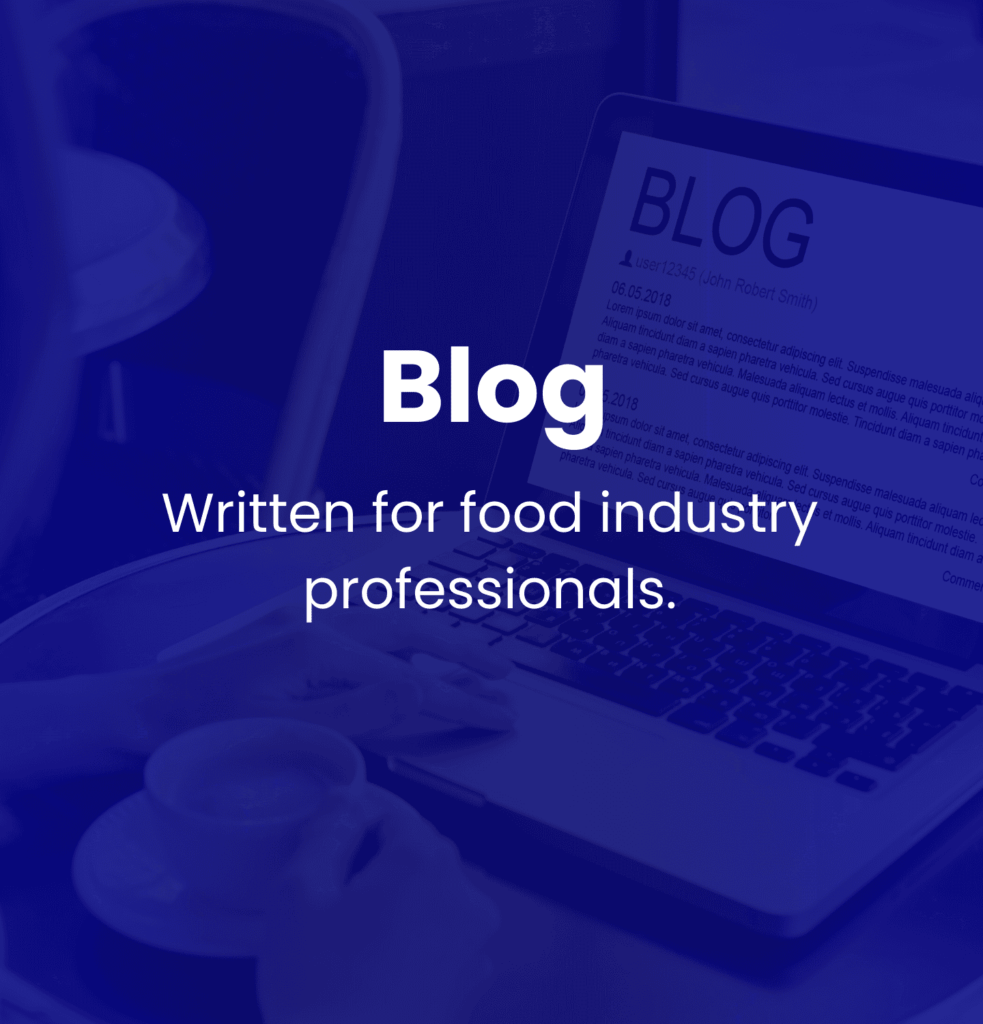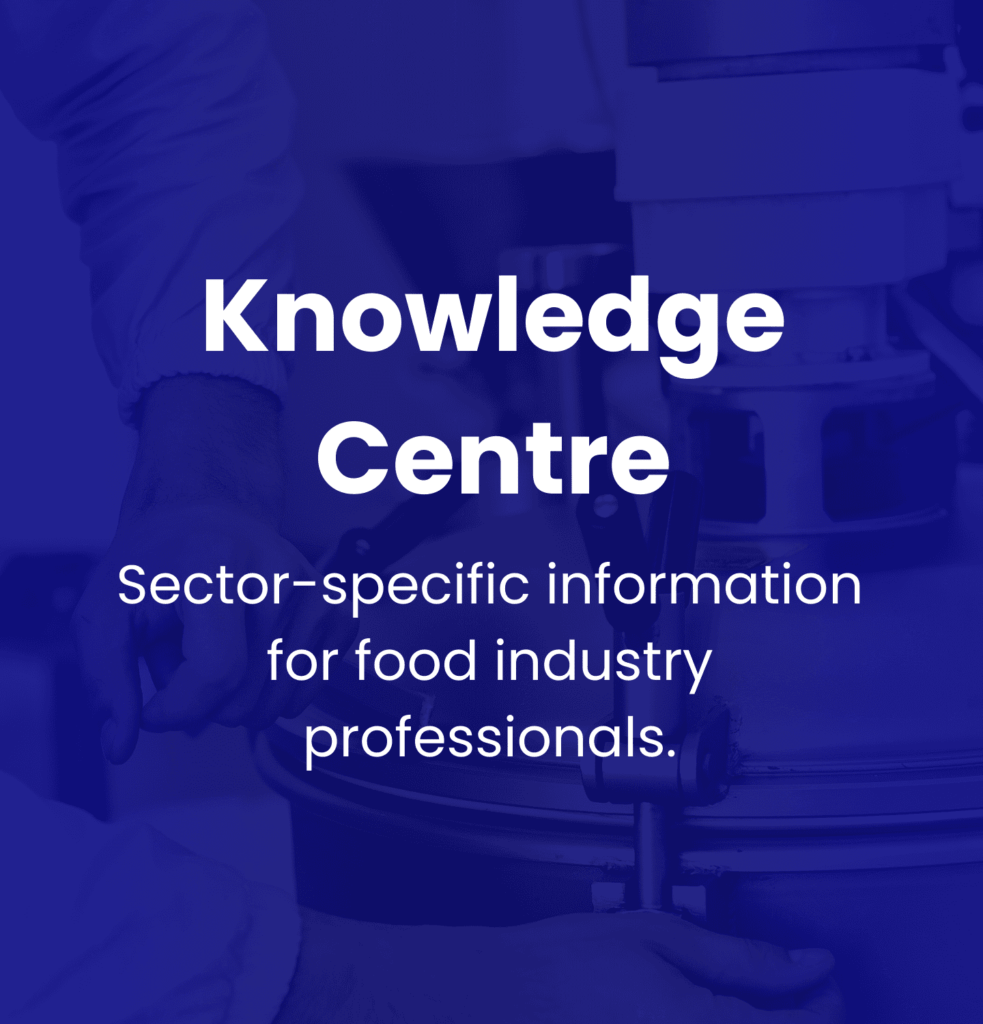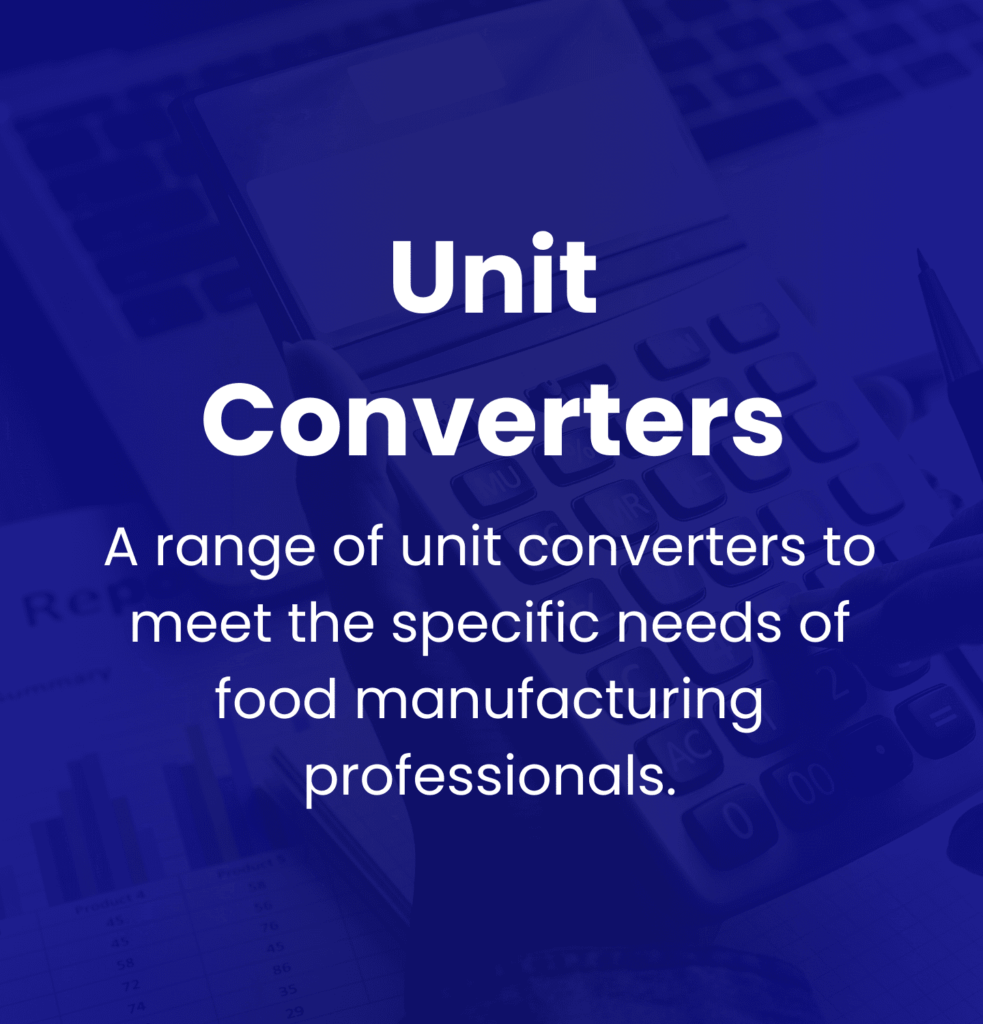Know: Water Activity (Aw) vs Moisture in Food Products
Contents
Introduction
Key Takeaways
Fundamental Concepts of Water Activity and Moisture Content
Microbial Stability and Food Safety
Measurement Techniques and Instrumentation for Water Activity and Moisture Content
The Role of Water Activity in Food Quality and Product Design
Regulatory Frameworks and Compliance
Water Activity and Moisture Management: Global Perspectives and Regional Challenges
Emerging Trends and Future Possibilities in Water Activity and Moisture Management
Conclusion
Introduction
Unlike moisture content, which is a measure of the total water in food, Aw considers how much of the water is available for microbial growth and chemical reactions. This difference means that foods with identical moisture content can produce vastly different outcomes. For example, honey, with a low Aw, resists spoilage in spite of its high moisture, while fresh meat, with a high Aw, spoils swiftly. Grasping these principles significantly influences food manufacturing, affecting everything from regulatory compliance to product texture and shelf life.
Defining Water Activity and Moisture Content
Water Activity (Aw) is best defined as the ratio of water’s vapour pressure in food compared to that of pure water at the exact same temperature. Measured on a scale that ranges from 0 (completely dry) to 1 (pure water), Aw indicates how securely water is bound within food matrices. On the other hand, moisture content simply denotes the percentage weight of water in a product, usually measured via oven drying or Karl Fischer titration methods.
Water Activity, Moisture Content, and Food Safety, Quality, and Legality
Aw and moisture content have substantial influence over important aspects of food safety, quality, and legality. When considering safety, there are specific thresholds displaying their impact on microbial growth: bacteria thrive if Aw is above 0.91, yeast flourish above 0.88, and moulds expand above 0.70. Lowering Aw below 0.85 in foodstuffs like jerky can help suppress pathogens such as Salmonella. Equally, chemical stability of products can worsen, exemplified by lipid oxidation quickening around an Aw of 0.4–0.5, leading to rancidity. In terms of quality, texture comes into play; a lower Aw in crackers assures crispness, whereas a higher Aw results in dampness. From a legal perspective, bodies such as the FDA and USDA stipulate mandatory Aw controls for specific foods, thus reinforcing compliance and safety.
The Impact on Food Preservation and Spoilage
Understanding the influence of Aw and moisture content proves significant in food preservation and spoilage. Preservation techniques such as drying and salting work to reduce Aw by eliminating or binding water. Hurdle technology strategically combines Aw decrease with other measures like pH or temperature control. Spoilage factors, including mould growth at Aw values as moderate as 0.70–0.75, which can affect even dried fruits, or enzyme activity that degrades pigments and nutrients according to hydration levels, are dependent on these product characteristics.
Methods to Measure Water Activity and Moisture Content
There are a variety of methods available to measure Aw and moisture content. For instance, chilled-mirror dew point meters facilitate real-time monitoring of Aw as part of process control, while traditional loss-on-drying techniques judge moisture content for finished products.
Key Takeaways: Water Activity versus Moisture Content in Food Manufacturing
Water Activity (Aw) and Moisture Content emerge as fundamental parameters in food manufacturing, each serving unique functions while collectively contributing to food safety and quality. Aw measures water accessible for microbial growth, whilst Moisture Content gauges the total amount of water in a food item. Both parameters play instrumental roles in food safety, stability, texture, and overall quality.
Functions of Water Activity and Moisture Content
Aw significantly affects food safety by determining the potential for microbial growth within products. For example, bacteria such as Clostridium botulinum need an Aw of over 0.93 for growth, while moulds can thrive at Aw values above 0.70. Conversely, Moisture Content influences the textural qualities as well as the efficiency of processing and preservation, impacting attributes such as the crispiness of snacks. Importantly, while both measurements are integral, they fulfil different purposes; Aw can directly forecast spoilage risks and shelf life, but Moisture Content typically cannot perform this function independently.
Techniques for Measuring Parameters
The determination of these parameters necessitates the use of specific techniques suited to each one. The chilled mirror dew point method is commonly used for measuring Water Activity, and is well-regarded for accuracy. An alternative, the capacitance sensors method, offers a more cost-efficient, albeit slightly less accurate, solution. For assessing Moisture Content, techniques such as Loss-on-Drying are often used, along with non-destructive methods like Near-Infrared (NIR) Spectroscopy.
Regulatory Frameworks
Regulations across different markets underscore the control needed over these factors. For instance, in the United States, the FDA requires an Aw of 0.85 or below for certain goods to avoid imposing low-acid food regulations. The European Union enforces similar standards, setting specific microbiological criteria for products. At a global level, bodies like the Codex Alimentarius recommend limits on Aw to inhibit microbial growth in dried goods, emphasising the importance of compliance in the manufacturing process.
Comprehending the separate mechanisms and applications of Water Activity and Moisture Content assists manufacturers in optimising formulations and sustaining compliance with global standards, thereby enhancing food safety and quality.
Food Industry Hub Management Systems can significantly boost the effectiveness of your food safety and quality management system, leading to improved confidence and elevated quality assurance throughout your operations.
Fundamental Concepts of Water Activity and Moisture Content
Water Activity and Moisture Content: Definitions and Thermodynamic Principles
The Water Activity (Aw) is theoretically defined as the ratio of the water vapour pressure in a food product to the vapour pressure of pure water when both are at the same temperature. The concept of Aw is key in food manufacturing because it signifies the degree of water accessibility for biochemical processes, which include enzymatic reactions and microbial growth. The Aw of most food products will vary from 0.2 to 0.99, with the default value for pure water being 1.0. For instance, a dried fruit will have an Aw of 0.6, which is why it resists spoiling in spite of having a moisture content close to 20% – because the water is not easily available for microbial use [Source: FDA].
The Moisture Content is an absolute metric that calculates the total water present in a food item as a percentage of its dry weight. This parameter significantly influences the texture, mouthfeel, and overall sensory traits of a food product. However, the moisture content does not offer a direct measurement of the water available for chemical reactions or microbial life, and hence, a food item with high moisture content could still exhibit low water activity. The reason is that the high sugar concentration in honey, for example, binds moisture, leaving it largely unattainable for biological activity.
Although moisture content is a measurement of the total water present, water activity is indicative of the amount of water available for biochemical and microbial processes. An understanding of this difference is valuable when it comes to product formulation and maintenance of stability. A popular food product such as jerky, having an Aw of less than 0.85, can retain stability over extended times, even when its moisture content is approximately 25%. This is unlike fresh meat, which tends to spoil rapidly due to an Aw usually surpassing 0.95 [Source: IFT].
An understanding of certain thermodynamic principles helps to explore the relationship between Aw and moisture content. With a rise in temperature, there’s observable impact on both water activity and moisture content due to the increase in vapor pressures. This interaction implies that higher temperatures typically result in elevated water activity, as water molecules gain energy and show greater probabilities of contributing to chemical processes and microbial activities [Source: Calright].
Sorption Isotherms and Moisture Equilibrium
A sorption isotherm graphically depicts the equilibrium relationship between a food product’s moisture content and its Aw under constant temperature conditions. These isotherms are specific to the product’s composition, so for instance isotherms might be affected by the ratios of sugars to proteins. An understanding of sorption isotherms is useful in predicting how moisture will behave—whether it be absorbed or released—during the processes of storage, handling, and transportation.
Comprehending sorption isotherms carries significant importance for preserving the safety and quality of food. In a combined product such as muesli that contains raisins, moisture may migrate from the high-Aw raisins to the low-Aw bran flakes, causing textural deterioration. By utilising these insights, manufacturers can consider interventions like moisture-barrier packaging that keeps a check on the levels of Aw, thereby optimising the product’s shelf life.
Ensuring and maintaining moisture equilibrium is a key aspect of food stability. When food products are stored in environments that are not compatible with their inherent Aw, there’s increased likelihood of moisture migration, which leads to depreciation of both quality and safety. Practices such as modified atmosphere packaging provide effective means of compensating for moisture levels. They can help greatly to hinder microbial growth and prolong shelf life. Therefore, by understanding and strategically utilising the principles of sorption isotherms and moisture equilibrium, food manufacturers can enhance product safety, control quality, and ensure customer satisfaction.
Microbial Stability and Food Safety
In food products, Water Activity (Aw) is a key factor in predicting the likelihood of microorganism proliferation, including bacteria, moulds, and yeasts. It indicates the level of free water that’s available for biochemical reactions and microbial growth, gauged as the ratio of water vapour pressure in the food to that in pure water under the same temperature conditions [Source: Food Safety Magazine]. Comprehending Aw is integral to food safety, as it aids manufacturers in forecasting potential spoilage and pathogenic growth.
Role of Water Activity (Aw) in Predicting Microbial Growth
Some details regarding specific microorganisms are worth noting:
- Bacteria: The majority of bacteria necessitate an Aw above 0.90 for successful proliferation. Certain harmful strains, such as Clostridium botulinum, require an Aw closer to 0.93, with some conditions pushing this minimum limit to about 0.96.
- Moulds and Yeasts: On the other hand, moulds can comfortably thrive at Aw levels as low as 0.70, while multiple yeasts appear to proliferate at an Aw of roughly 0.60, allowing them to grow even in environments with lower moisture.
Growth Limits for Various Microbial Groups
Different microorganisms have distinct Aw thresholds for growth:
- Most Bacteria: They usually need an Aw above 0.90.
- Clostridium botulinum: This bacteria’s growth mandates Aw levels between 0.93 and 0.96.
- Moulds: They can propagate at Aw levels lower than 0.70.
- Yeasts: They can often proliferate at Aw levels around 0.60.
It’s worth highlighting that typically, foods with Aw levels of 0.85 or less are exempt from certain FDA rules concerning low-acid canned and acidified foods, underscoring the influence of Aw in regulation adherence.
Importance of Hygiene and Aw Management in Food Processing
Although controlling Aw is a fundamental part of reducing microbial risk, it needs proper support from comprehensive hygiene practices within food manufacturing sites. Robust sanitation routines, including clean surroundings, sanitised equipment, and effective cross-contamination prevention procedures, must accompany Aw control. Combined, these measures contribute to maximum reduction in potential microbial contaminants, forming vital aspects of an all-encompassing Hazard Analysis and Critical Control Points (HACCP) programme. This balanced approach bolsters the longevity and safety of food items throughout their shelf life.
Microbial Growth Limits and Water Activity
Aw has a strong influence on microbial growth across a wide array of food types:
- Above 0.95 Aw: Foods in this bracket support a large array of microbial growth, thereby posing high spoilage risks common in fresh items such as meat and dairy.
- Aw Between 0.85 and 0.95: This category can harbour yeast and mould growth, though it’s largely prohibitive for bacteria. Products like soft cheeses and cured meats in this range must be diligently monitored to avoid spoilage.
- Below 0.85 Aw: Foods in this group, like certain spices and dried fruits, often remain stable without refrigeration, making them successful in inhibiting pathogen growth.
Influence of Different Aw Value Ranges on Microbial Growth
Some foods, on account of their water activity, bring about specific problems:
- Cheeses: Dependent on their moisture content, cheeses can either encourage beneficial bacterial activity or inadvertently create favourable conditions for mould growth if not handled appropriately.
- Cured Meats: These foods are dependent on the reduction in Aw through drying processes and the addition of salt to impede pathogenic growth.
Unique Risks Associated with Certain Food Types
The practice of reducing Aw, known as Aw suppression, is a potent risk mitigation strategy, particularly relevant in semi-moist packaged foods. Lowering Aw with methods like drying or solute addition (sugar and salt, for instance) creates challenging conditions for microbial growth, thereby extending the shelf-life of a product without the need for high-temperature processing.
Toxin Production and Risks
Despite the fact that lowered Aw limits microbial growth, a safety concern arises from certain moulds being able to generate mycotoxins even at sub-threshold Aw levels. Mould species like Aspergillus spp. can produce aflatoxins in low moisture conditions, making meticulous Aw management during food processing and storage necessary.
Overview of Latent Risks Related to Mycotoxin Production at Sub-Threshold Aw Levels
Rigorous Aw checks are essential for the long-term storage of items such as grains, nuts, and dried fruits where both microbial growth and mycotoxin production risks increase with elevated moisture levels. Constant monitoring and appropriate environmental modifications play a key role in risk reduction, ensuring the safety of food products.
Sign-up for the Food Industry Hub Mail Service
We regularly produce new content for food industry professionals, and the Food Industry Hub Mail Service is the best way to stay up to date with the latest additions.
Signup today to be added to the Food Industry Hub mailing list.
Measurement Techniques and Instrumentation for Water Activity and Moisture Content
In the food manufacturing industry, accurately measuring Water Activity (Aw) and moisture content is key to ensuring product safety, improving quality, and extending shelf life.
Overview of Traditional and Modern Methods for Measuring Aw and Moisture Content
Traditional Methods: One well-known method is the saturated salt slurry (SSS) technique. This classic gravimetric strategy uses a saturated solution to establish equilibrium relative humidity around a food sample. While stable results can be achieved, the process is time-consuming and often takes several hours to days. The prolonged exposure of the food sample to the testing environment presents possibilities for microbial contamination, risking spoilage and compromising sample integrity during analysis. Similarly, gravimetric methods like oven drying measure moisture content by identifying weight loss post-drying, but they cannot differentiate between free and bound water. This limitation hampers their effectiveness in appraising food stability [Source: Texas A&M Institute].
Modern Methods: Advancements have led to state-of-the-art methods. Dynamic Vapor Sorption (DVS) enables swift yet precise Aw assessments by recording mass changes under controlled humidity. This cutting-edge technology can produce results in as little as two hours, with remarkable precision of 0.003 aw units. Moreover, portable dew point meters, with their chilled-mirror technology, allow quick Aw determination in low-water activity foods (aw <0.7), proving invaluable for immediate quality control in production settings.
Challenges in Calibrating Measuring Instruments
Calibrating Aw meters isn’t without its complications, with challenges that could potentially hamper measurement accuracy. Preparation of stable calibration standards presents a primary concern. These largely depend on saturated salt solutions, variations in purity and concentration of which can lead to inconsistent results. Maintaining consistent environmental conditions during calibration is significant as Aw values are temperature-sensitive. Even slight variations of ±0.1°C could affect results by ±0.003 aw units. In addition, low Aw products, due to their propensity to absorb moisture from the environment, require high-standard handling to prevent skewed measurements. Recalibration becomes necessary to offset sensor drift over time, particularly important for portable units used in varying field conditions.
Comparison of Portable versus Benchtop Aw Meters: Utility and Applications
Choosing between portable and benchtop Aw meters ultimately depends on distinct operational needs within the food manufacturing setting.
Portable Aw Meters are designed for immediate adjustments, enabling speedy field measurements integral to production processes. Their usability facilitates prompt on-site assessments and improves decision-making in quality control. Notwithstanding their convenience, these devices might slightly compromise precision due to their small size and exposure to environmental changes.
On the other hand, Benchtop Aw Meters promise enhanced accuracy and stability, aided by controlled laboratory environments that mitigate impact from external variables. They can handle a wider range of sample sizes and types, making them an ideal choice for comprehensive analyses, product development, and compliance testing. Despite their greater intricacy and associated costs, the accuracy these devices provide is often warranted, especially for compliance-centric applications.
Both types of meters play notable roles in the quality assurance processes of food production. Portable meters are vital for routine checks while benchtop models are irreplaceable for thorough studies and compliance-related evaluations. Collectively, they strengthen the industry’s resolve to uphold safety and quality standards throughout the production life cycle, thus assisting manufacturers in efficiently meeting regulatory requirements.
The Role of Water Activity in Food Quality and Product Design
Water activity (Aw) is a key parameter in food manufacturing. It is an indicator of the active or ‘free’ water that’s available for chemical reactions and microbial growth, in contrast to moisture content, which simply measures the total water in the product. For food manufacturers, understanding Aw is imperative since it influences non-microbial degradation pathways as well as the overall quality and stability of food products.
Non-Microbial Degradation Pathways and Water Activity
Water activity has a significant impact on food quality, affecting non-microbial degradation processes, particularly the Maillard reaction and lipid oxidation.
- Maillard Reaction: This renowned reaction which gives food its ‘browned’ look, occurs between reducing sugars and amino acids, and is stronglly influenced by Aw. The ideal conditions for this reaction occur within an Aw range from 0.6 to 0.8, offering enough moisture for mobility of reactants without dilution. If Aw levels are too low, the reaction slows due to lack of moisture, while excessive Aw levels can dilute the reactants, thereby inhibiting the reaction. This can limit desirable browning and flavour development in products like baked goods and roasted meats.
- Lipid Oxidation: Simplistically, this is a process leading to rancidity and off-flavours, which is a significant concern in food preservation. Higher Aw levels can promote lipid oxidation by enhancing the mobility of oxygen and pro-oxidant species, and careful management of Aw can help control this method of food degradation. Research has established that Aw levels above 0.6 speed up lipid oxidation due to increased water solubility of oxidants and enzymes.
- Antioxidant Additives: To counteract degradation, food manufacturers commonly employ antioxidant additives, like tocopherols and ascorbyl palmitate. These additives work by scavenging free radicals and reducing the rate of lipid oxidation, which helps to retain product quality over time. Aw can affect the effectiveness of these antioxidants, signifying the need for an optimal balance between moisture levels and antioxidant concentrations in food formulation.
Texture and Shelf-Life Optimisation Through Water Activity Management
Consummate management of water activity is critical for optimising texture and prolonging the shelf life of various food products.
- Role of Aw in Texture Modulation: For products like chocolate, an Aw between 0.4 to 0.5 is necessary to inhibit sugar bloom, a process where excess moisture leads to sugar crystallisation on the surface. In gummy candies, by controlling Aw between 0.6 and 0.7, chewiness is preserved through adequate water binding, stopping the texture from becoming either too hard due to moisture loss or too sticky from excess moisture.
- Preventing Caking in Food Powders: For food powders such as milk or cocoa powder, it’s important to maintain an Aw below 0.35 to ensure their flowability and to prevent caking. Achieving this can be accomplished through the use of desiccants in packaging or by managing humidity levels during storage, which ensures the product retains its desired physical properties.
- Staling in Baked Goods: Staleness, often related to moisture migration and starch retrogradation, can be halted by controlling Aw. Adjustments in Aw can lead to prolonged freshness in products like bread and pastries. Using humectants and ensuring appropriate packaging integrity can extend the shelf-life by managing moisture levels, thus slowing the staling process.
Through careful management of water activity, food manufacturers can improve product stability, optimise texture, and extend shelf life, ultimately leading to higher consumer satisfaction while minimising waste across the supply chain. The delicate balance of Aw in managing food product formulation and packaging is necessary for maintaining quality and compliance in the food industry.
Regulatory Frameworks and Compliance
Understanding Standards and Regulations for Aw and Moisture Content in the UK, EU, and USA
Water Activity (Aw) and moisture content are significant elements in maintaining food safety and quality. The regulatory structures in the UK, EU, and USA significantly influence their management, especially in relation to preserved meats and other perishable goods.
Post-Brexit, the United Kingdom aligns adaptively with the European Union (EU) food safety standards, even as it formulates its own national guidelines. The UK Food Standards Agency (FSA) accentuates an inclusive framework for securing microbial safety. In this context, both Aw and moisture content are significant aspects of managing risks affiliated with foodborne diseases [Source: Food Standards Agency]. Although there are no globally accepted explicit regulations on Aw, moisture content is regulated within specific product guidelines, specifically preserved meats and dairy products. This is done to maintain stability and safety. One of the main controls is the maintenance of suitable drying processes and salinity levels, having a substantial influence on moisture content and thereby, the Aw values.
The EU implements food safety through numerous frameworks, noteworthy among them being the EU Food Hygiene Package and Regulation (EC) No 2073/2005 on microbiological criteria for foodstuffs (ANNEX II). These mandates aim at microbial limits that are in correlation with Aw levels. As part of this, preserved meats have to maintain an Aw below 0.91 to prevent the growth of dangerous pathogens like Clostridium botulinum and Listeria monocytogenes.
In the United States, the Food and Drug Administration (FDA) and the United States Department of Agriculture (USDA) predominantly supervise food safety guidelines. They accentuate the prevention of moisture-related microbial contamination, although they impose fewer specific restrictions on Aw as compared to the EU. The USDA prioritises moisture control for meat products to mitigate risks relating to foodborne illnesses, and largely relies on Good Manufacturing Practices (GMP) and Hazard Analysis Critical Control Points (HACCP) for guidelines. Both the USDA and FDA stipulate moisture retention specifications but refrain from comprehensive limits on Aw across all food categories.
Highlighting Regulatory Differences Across Regions for Preserved Meats
When comparing preserved meats between the UK/EU and the USA, the disparities in the regulatory structures become apparent. The UK and EU standards are quite comprehensive, insisting upon rigid control of Aw to restrict microbial activity in products like ham and salami. Specifically, the EU’s limits on moisture and salt concentration are integral to Aw regulation thereby ensuring product safety.
Conversely, the U.S. regulatory environment demonstrates a wider acceptance of various preservatives across different states, often leading to inconsistencies in moisture and Aw management procedures. The USDA allows a greater scope for interpreting regulatory compliance, while the FDA’s post-market survey often results in varying levels of enforcement.
Notable Regulations Influencing Food Quality and Safety Related to Aw and Moisture Content
Several key regulations directly influence Aw and moisture management, and subsequently, food quality and safety. In the EU, compliance with Regulation (EC) No 2073/2005 ensures robust controls are implemented to manage microbial hazards, with an emphasis on maintaining moisture content for preserved meats to prevent spoilage. The EU’s framework incorporates assessments of moisture and Aw within its broader hygiene guidelines.
In the UK, the Food Safety Act 1990 necessitates compliance with safety measures, including moisture and Aw controls, in alignment with EU norms. In the United States, as part of FSMA and USDA guidelines, regulations stipulate moisture level management, leading to preventative controls related to moisture data.
In essence, while all three regions are appreciative of the importance of controlling Aw and moisture content in restricting microbial growth and assuring food safety, the differences in regulatory approaches highlight the equilibrium required between mandatory safety procedures and industry adaptability. Grasping these frameworks is crucial for food manufacturers seeking compliance and maintaining product quality in diverse markets.
Water Activity and Moisture Management: Global Perspectives and Regional Challenges
Rapidly developing markets, particularly in the Asia-Pacific region, are exhibiting a marked increase in the demand for clean-label snacks. Defined by their limited ingredient lists and a reduction in artificial substances, these products place an onus on manufacturers to adequately manage water activity (Aw). Especially since these products generally lack artificial preservatives, maintaining acceptable Aw levels is essential to ensure both microbiological safety and the ongoing quality of the product, while also preserving its nutritional content and taste profile.
Research indicates that aiming for Aw values below 0.85 is effective in staving off bacterial growth in low-acid foodstuffs, which aligns with FDA-recommended practices for safe food manufacture.
Influence of Regional Climates on Water Activity Management Strategies
Geographic climates have a tangible effect on Aw management approaches. In high humidity regions like Southeast Asia, the task of retaining low Aw values is complicated by the increased risk of ambient moisture absorption, which can trigger rapid spoilage or the growth of microbes. Manufacturers in these regions often leverage advanced drying technologies and innovative packaging materials that resist moisture, mitigating such risks. Packaging materials designed to block moisture ingress are instrumental in achieving product stability and microbiological safety.
In contrast, manufacturers situated in arid locales grapple with the threat of moisture loss. Strategies to prevent dehydration have to be integrated to sustain the texture and functionality of their products. Employing packaging that retains moisture and controlling environmental conditions during storage and transportation are common practices to check unpredictable changes in water activity.
Overview of Advanced Packaging Techniques for Maintaining Optimal Aw Levels
Modern packaging technologies are receiving recognition as effective tools in Aw management for food items. Techniques such as Modified Atmosphere Packaging (MAP), where the gaseous composition surrounding food is adjusted to inhibit microbial multiplication and curb moisture loss, are common practice. MAP assists in maintaining desirable Aw parameters and extends the shelf life of the product.
In addition, the use of moisture-barrier materials has been standardised. These aid in impeding the transfer of water vapour between the package and its external environment, hence ensuring Aw stability.
New technological advancements, such as smart packaging systems incorporating moisture scavengers and sensors that monitor Aw values in real-time, are ushering in a new era of dynamic and responsive food packaging strategies. This melding of technology not only uplifts product quality but also resonates with consumer expectations for fresh and safe products in the rapidly evolving clean-label market.
The management of water activity, through an understanding of regional climate challenges and the deployment of innovative packaging techniques, represents a key strategy in the assurance of product safety and regulatory compliance within the challenging landscape of food manufacturing.
Emerging Trends and Future Possibilities in Water Activity and Moisture Management
Potential Applications and Benefits of Integrating Smart Sensors and IoT
In food manufacturing, the merger of smart sensors and Internet of Things (IoT) technologies has ushered in a new era of water activity (Aw) and moisture management. Among the advancements, real-time monitoring systems that continuously track moisture and Aw levels during production are standout features. These systems are instrumental in curbing microbial growth in low-moisture foods, thereby circumventing serious food safety risks like Salmonella contamination in dried products and snacks [Source: Food Industry Executive].
Plus, smart sensors underpin the automation of environmental control systems. They empower manufacturers to swiftly react to changes in conditions like temperature and humidity. For instance, in response to rising humidity levels, these systems can initiate actions to sustain product quality and halt spoilage.
The wealth of data harvested from IoT devices is ripe for predictive maintenance of manufacturing equipment. Analysis of historical moisture dynamics enables companies to predict equipment failures, thereby reducing unscheduled downtime and preserving consistent product quality. This forward-thinking strategy also extends to the management of supply chains, where moisture levels can be monitored during transit to optimise conditions, prevent spoilage, and maintain product compliance throughout the distribution process.
Potential Benefits of Sustainable Formulations
There’s a growing emphasis on sustainable formulations in regard to moisture management and Aw, driven by consumer demands for cleaner labels and healthier products. Food manufacturers can significantly reduce their dependence on chemical preservatives by carefully formulating products to operate at lower Aw levels—ideally below 0.7, which curtails mold growth. This strategy not only bolsters food safety but also aligns with the increasing consumer inclination towards natural ingredients.
These sustainable formulas aid in waste reduction by offering precise control of moisture levels, thereby averting undue drying that causes product degradation like caking and texture loss. Products such as powdered ingredients reap significant benefits from these formulations, preserving their quality while reducing production waste. Embracing these environmentally friendly practices not only upholds the environmental agenda but also strengthens the market appeal through improved functionality and safety.
Potential Uses of AI in Predictive Models
Artificial intelligence (AI) is primed to take the steering wheel in predictive modelling of moisture content and water activity in food products. Machine learning algorithms can sift through extensive datasets encompassing temperature, humidity, and other environmental factors to better gauge their impact on Aw. This superior analytic ability allows manufacturers to devise more precise models predicting moisture retention and stability, paving the way for proactive interventions in production processes.
AI’s role extends to the optimisation of product formulations, identifying the optimal mix of ingredients and processing conditions to maintain target water activity levels, extending shelf life and minimising waste. This tactic is particularly valuable for vulnerable food groups such as intermediate-moisture products, where precise Aw control is fundamental for ensuring long-term safety and quality. Implementation of AI-driven insights enables food manufacturers to better sync with industry trends geared towards enhanced product quality and sustainability while meeting evolving consumer demands.
The convergence of these technologies delivers superior moisture management practices and enables food manufacturers to fulfill sustainability goals while simultaneously boosting overall product safety and quality.
Conclusion
Relationship Between Water Activity and Moisture Content
Water activity (Aw) and moisture content both hold distinct, yet complementary roles in food manufacturing. Water activity quantifies the energy state of water molecules, governing microbial stability and chemical reaction rates, and thus indicates their availability for biological processes. Pathogens, for instance, normally necessitate an Aw equal to or greater than 0.93 for growth, whereas spoilage bacteria find it difficult to survive when the Aw is below 0.85. Conversely, moisture content dictates the total water volume in a product and has a direct impact on the product’s texture, weight, and processing efficiency. This difference elucidates how two food products with similar moisture content might have vastly distinct shelf-life capabilities due to the unique Aw levels.
Anticipated Innovations in the Management of Water Activity
- Predictive Modelling: Merging real-time Aw sensors with Artificial Intelligence (AI) provides food manufacturers with an effective tool to foresee microbial risks and optimise drying processes, potentially resulting in substantial energy savings in food dehydration practices.
- Sustainable Formulations: Utilising humectants such as plant-based fibres to bind free water, without requiring synthetic additives, could align with the prevailing ‘clean-label’ trends, thereby possibly augmenting nutritional profiles while ensuring safety standards remain uncompromised.
- Dynamic Packaging: Intelligent packaging materials that adjust permeability in response to Aw changes can assist in preserving freshness for minimally processed foods, offering a practical solution to extend product shelf-life.
Significance in Ensuring Safety, Quality, and Regulatory Compliance
- Microbial Control: Grasping the limits of Aw is instrumental in thwarting outbreaks of foodborne illnesses, which have been associated with deficient Aw management in low-acid canned goods. A precise measurement of Aw can help to avoid regulatory violations and prospective product recalls.
- Quality Consistency: Retaining specific moisture levels is pivotal in ensuring a uniform texture in food products. Likewise, managing Aw prevents unwanted changes like caking in powders or staleness in baked goods, which otherwise could compromise quality.
- Regulatory Alignment: Adherence to FDA regulations requires a dual validation of both moisture content and Aw to guarantee safety and quality in food products, particularly in sectors dealing with low-acid foods.
Key Industry Insight: Manufacturers that utilise dual monitoring systems, combining moisture meters with Aw analysers, have reported fewer non-conformances and achieved improved yield optimisation, primarily by evading the risks associated with over-drying.
Recommendation: Investments in combined sensors, along with the adoption of ISO 21807:2020 standards for Aw testing, will enhance the efficiency of data collection processes, ensuring alignment with evolving regulatory expectations whilst furthering sustainability goals in the food manufacturing industry.
About The Food Industry Hub Knowledge Centre
The Food Industry Hub knowledge centre delivers informative content on a variety of topics pertinent to the food manufacturing industry.
You can return to all topics by clicking here.
From The Food Industry Hub Blog
Expanding on this topic with related content from our blog.

